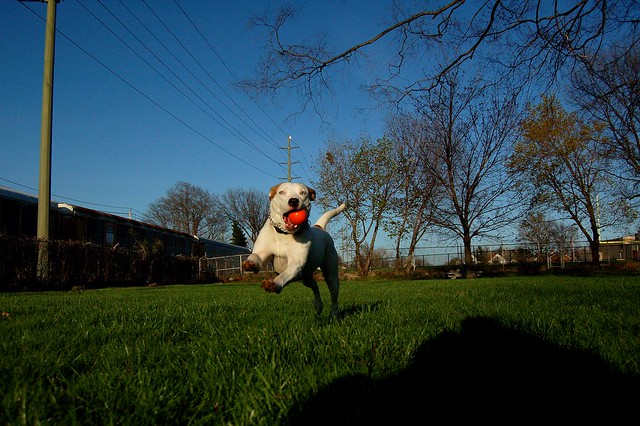Five tips for stretching with your new best friend: the lacrosse ball
On the surface, triathlon appears to be comprised of three skills: swimming, cycling and running.
But when you drill down, there are two other arenas that deserve just as much attention as those three obvious sports.
Can you guess what they are?
Sunscreen and sportswear?
Fish oil and financing?
Technology and travel?
Nope. The answers we were looking for are stretching and nutrition.
Stretching and nutrition can heavily influence your performance in triathlon, and we’ve talked about both subjects a few times already on this blog (see A beginner’s guide to endurance grubbin’, Fill your tank like a frugal caveman and Stretch like gumby).
As with most triathlon topics, there’s no shortage of information and advice. That’s why it’s important to try out various approaches and figure out what works best for you.
Recently, I’ve incorporated rolling out with a lacrosse ball into my mobility routine and it’s helping me bounce back from my foot injury, recover after exercising, increase flexibility and (hopefully) prevent future injuries.
I don’t see many people using lacrosse balls to stretch at the gym, so I’m assuming it hasn’t caught on with the masses.
In case you haven’t experimented with this tactic yet, I’m going to share some of the tips that I’ve found useful thus far, so that you can try them out and see if they work for you too.
Here are my five tips for stretching with a lacrosse ball.
1. Focus on the pain
Go slowly and seek out areas that feel stiff and crunchy. When you find a sensitive spot, stop there, apply more pressure and really make it Hurt. If you’re not grimacing, shaking or cursing, then you’re doing it wrong. Hold it there for a bit, and let the lacrosse ball break up that tension. Feel the muscle release and then slowly roll on to the next spot.
2. Keep rollin’ rollin’ rollin’ every day
Make lacrosse ball stretching a fixture of your post-workout stretching routine. You do have a post-workout stretching routine, don’t you? Good. Put a lacrosse ball in your gym bag, keep one by your couch, or bring one to work and squeeze in a 10-minute roll session everyday. It may seem like a chore, but keep rollin’ and your body will thank you for it down the line.
3. Make a peanut and get it back
Tape two lacrosse balls together and roll out your spine, back, neck and shoulders. The video above shows how, using some kinesio tape. Another option, which I did, is to use the cheap athletic tape from Walgreens or CVS instead of the kinesio tape. At least every other day, I use the “peanut” to stretch the thoracic spine. Do this by positioning the peanut centered and perpendicular to the spine, at the bottom of the rib cage (with the spine splitting the two lacrosse balls). With knees bent and butt and feet planted on the ground, give yourself a hug and lean back to rest the back of your head on the ground. Hang out there for about a minute and let the tension release. Proceed all the way up to the base of the neck, holding for a minute at each spot along the way.
4. Take it easy on the price
You don’t have to spend a bunch of money to get your lacrosse ball stretch on. After all, you spend enough money on gear and race entries. Go to a used sporting goods store and I bet they’ll have a bin of used lacrosse balls. I found mine for under $2 each.
5. My feet, my calves, my hips and back
Here are four areas that I’ve found the lacrosse ball to work wonders – especially post workout.
- Standing up, step on the lacrosse ball and spend two good minutes slowly rolling it around the bottom of your foot – pausing and pressing on the sensitive spots, of course.
- Sitting on the ground, traverse each calf, from knee to ankle, and back again.
- Sitting on the ground, pin the lacrosse ball against your outer hip and slowly roll around that area. Extremely painful – extremely good.
- Lying on the ground, take the peanut and perform the stretch described in tip No. 3 above. You can even add a variation with your arms extended, instead of hugging. This stretch is also great just after a long day of sitting at a desk.
More resources for lacrosse ball stretching:
- 4 Great Tools for Stretching and Mobility
- Lacrosse ball stretches
- Video: Lower leg business
- Book: Power Speed Endurance
Have you befriended the lacrosse ball and seen improvements in your performance and flexibility? Share your tips in the comments!
– Live every day –
Adam
Photo credit Todd Kravos
